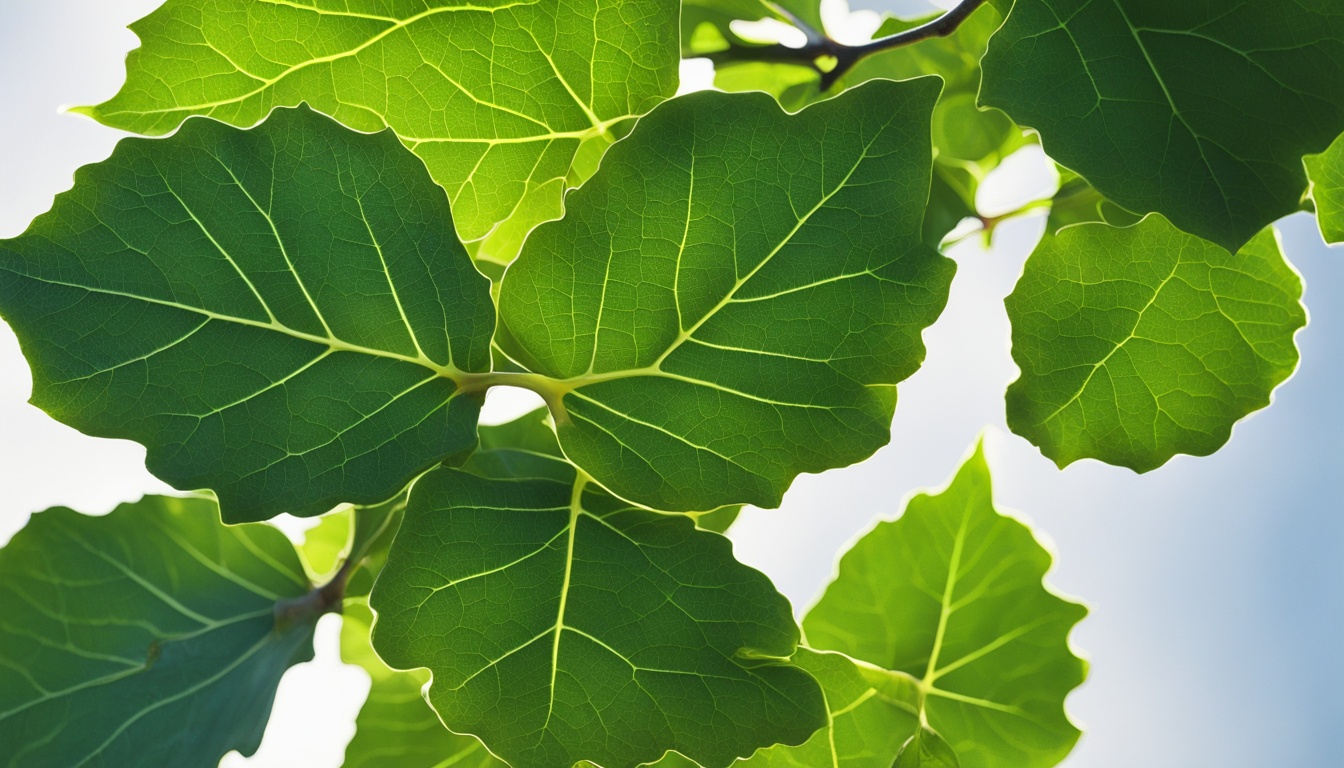I’m excited to share my knowledge about the Begonia Escargot plant. This plant is a favorite among indoor plant lovers. It’s known for its unique beauty.
In this guide, I’ll cover everything you need to know to grow and care for your Begonia Escargot. We’ll start with its origins and move on to the best growing conditions.

Key Takeaways
- The Begonia Escargot is a visually stunning plant with its distinctive spiral-shaped leaves.
- It thrives in bright, indirect light and prefers moderate temperatures and humidity levels.
- Properly watering and fertilizing your Begonia Escargot is crucial for its healthy growth.
- Pruning and grooming techniques can help maintain the plant’s neat and tidy appearance.
- Propagating Begonia Escargot is a great way to expand your indoor garden collection.
Popular Articles
Introducing the Captivating Begonia Escargot
The Begonia escargot is a unique and enchanting plant. It will grab your attention the moment you see it.
Its spiral-shaped leaves and interesting name make it stand out in any indoor garden.
A Unique and Enchanting Plant
The Begonia escargot’s leaves are mesmerizing. They have a spiral pattern that looks like a snail’s shell. This design makes the plant visually striking and unique.
As the leaves unfurl, they create a captivating display. They will leave your guests and visitors amazed.
Exploring its Intriguing Name and Origins
The name “escargot” means “snail” in French. It refers to the plant’s spiral leaves that look like a snail’s shell. This connection to nature adds to the plant’s charm.
The Begonia escargot comes from the lush rainforests of Southeast Asia. Its ancestors thrived in the dappled sunlight and high humidity.
This heritage gives the plant an exotic touch, making it a captivating addition to any indoor garden.
Whether you’re a plant expert or new to begonias, the Begonia escargot will capture your heart. Its unique features and interesting story make it a special plant. It will add enchantment to your indoor space.
Begonia Escargot: A Stunning Addition to Your Indoor Garden
The Begonia Escargot is a standout in indoor plants. Its spiral leaves and compact size make it a beauty. It adds elegance to any room, perfect for home or office.
This plant is known for its unique leaves that look like snail shells. They spiral out, catching the eye and sparking curiosity. It’s a great way to show off your unique plant collection.
“The Begonia Escargot is a true work of art, with its mesmerizing spiral leaves that seem to dance across the room.”
The Begonia Escargot is easy to care for, great for all plant lovers. It’s small but has lush foliage, ideal for decorating shelves or windowsills.
Looking to add elegance to your space? The Begonia Escargot is a great choice. It’s beautiful and easy to care for, perfect for any plant enthusiast.
Ideal Growing Conditions for Thriving Begonia Escargots
To make sure your Begonia Escargot plant does well, you need to give it the right growing conditions.
We’ll look at what light, temperature, and humidity it likes. This way, you can make the best environment for your beautiful Begonia Escargot.
Light Requirements for Optimal Growth
Begonia Escargots love bright, indirect sunlight. They do best in a spot with lots of filtered light, like near a north- or east-facing window.
Stay away from direct sunlight, as it can burn the leaves. The begonia escargot light requirements are key for its health and looks.
Temperature and Humidity Preferences
Begonia Escargots like a steady temperature, between 65°F and 75°F (18°C to 24°C). They don’t like sudden changes in temperature, so keep them away from drafty spots or extreme heat or cold. Keeping the begonia escargot temperature right is important for the plant.

Humidity matters a lot for Begonia Escargots too. They like a humid environment, with a relative humidity of 50% to 70%. If the air gets too dry, the leaves might wilt or turn brown. To keep the begonia escargot humidity right, you can mist the leaves or use a pebble tray.
By giving your Begonia Escargot the right begonia escargot growing conditions, you’ll help it grow and show off its beautiful spiral leaves.
Soil and Potting Mix for Healthy Begonia Escargot Plants
For a thriving Begonia Escargot, the right soil and potting mix are key. These plants need specific conditions to get the nutrients and drainage they need. Let’s look at the best soil and mix for your Begonia Escargot.
Begonia Escargot plants do well in well-draining, nutrient-rich begonia escargot soil or begonia escargot potting mix.
The perfect begonia escargot growing medium has a mix of organic stuff like compost or peat moss and inorganic stuff like perlite or sand. This mix keeps the soil moist but also lets it breathe and drain well.
| Soil Ingredient | Proportion | Purpose |
|---|---|---|
| Compost or peat moss | 50-60% | Provides organic matter and moisture retention |
| Perlite or sand | 40-50% | Enhances drainage and aeration |
When picking a begonia escargot substrate, choose a potting mix made for Begonia plants. These mixes have the right nutrients and drainage for Begonia Escargot. Or, you can make your own mix using the table’s proportions.
“The right soil and potting mix are crucial for the health and growth of your Begonia Escargot.”
Getting your Begonia Escargot the best begonia escargot soil or begonia escargot potting mix is key to its success. With the right begonia escargot growing medium, your plant will thrive in your indoor garden.

Watering and Fertilizing Your Begonia Escargot
Getting the watering and fertilizing right is key for your Begonia Escargot’s health and beauty. By following these tips, your plant will stay vibrant and happy.
Avoiding Common Watering Mistakes
Begonia Escargots need moist soil but not too much water. Don’t let the soil dry out, or your plant may wilt. But, don’t overwater either, as it can cause root rot.
- Water your Begonia Escargot when the top inch of soil feels dry to the touch.
- Use a well-draining potting mix to prevent the soil from becoming too soggy.
- Ensure your plant’s pot has adequate drainage holes to allow excess water to escape.
- Consider misting the leaves occasionally to maintain optimal humidity levels.
Fertilizing for Healthy Growth
Feed your Begonia Escargot a balanced, water-soluble fertilizer every two to three weeks when it’s growing. This keeps its leaves healthy and colors bright.
| Fertilizer Type | Recommended Frequency | Dilution Rate |
|---|---|---|
| Water-soluble balanced fertilizer | Every 2-3 weeks during growing season | Follow manufacturer’s instructions |
By following these watering and fertilizing tips, your Begonia Escargot will flourish. It will be a beautiful part of your indoor garden.
Pruning and Grooming Your Begonia Escargot
Keeping your Begonia Escargot’s unique leaves looking great needs regular care. As someone who loves plants, I’ve found that a bit of effort keeps your Begonia Escargot looking amazing. It makes a beautiful centerpiece for your indoor garden.
Tips for Maintaining a Neat Appearance
Here are some tips to keep your Begonia Escargot’s leaves looking great:
- Trim off any leaves that are damaged, discolored, or dead. This helps new growth and keeps the plant’s spiral shape.
- Use sharp, clean pruning shears for cuts to prevent disease.
- Wipe the leaves with a damp cloth to remove dust and keep them shiny.
- Turn the plant often to make sure it gets even light and grows evenly.
- Watch out for too much water, as it can harm the leaves.
By following these easy begonia escargot pruning, begonia escargot grooming, and begonia escargot maintenance tips, you can keep your plant looking beautiful. Your Begonia Escargot will thrive for many years.

“With a little care and attention, your Begonia Escargot can be a true showstopper in your indoor garden.”
Propagating Begonia Escargot: Multiplying Your Collection
Want to grow more begonia escargot? These plants are easy to spread, letting you share them with friends. We’ll look at how to grow more begonias, from cuttings to dividing the plant.
Begonia Escargot Cuttings
Propagating begonia escargot with cuttings is popular. Cut a healthy stem with leaves and a node.
Then, dip the cut end in rooting hormone and plant it in good soil. Keep the soil wet, and soon, you’ll see roots and new leaves.
Dividing Begonia Escargot
Dividing is another way to grow more begonias. Separate the plant’s rhizomes and roots into sections. Each section should have a leaf and roots. Put the new divisions in pots, water them, and give them the right growing conditions.
Choose your propagation method and be patient. With care, your begonia escargot will flourish. Soon, you’ll have many of these beautiful plants.
Common Pests and Diseases to Watch Out For
The Begonia Escargot is usually a tough plant, but it can face pests and diseases. It’s important to keep an eye out and deal with problems fast. This helps keep your Begonia Escargot healthy and thriving.
Identifying and Treating Issues Promptly
Spider mites are a common issue with Begonia Escargots. These tiny pests can make leaves look discolored and create webs. If not stopped, they can slow down the plant’s growth.
To fight spider mites, check the leaves’ undersides often. Use a strong water spray or insecticidal soap to get rid of them.
Powdery mildew is another problem that can happen. It’s a fungal disease that makes leaves look white and powdery. To stop and treat it, make sure the plant gets good air flow. Lower the humidity and use a fungicide made for Begonia Escargots.
Sometimes, Begonia Escargots can get root rot if the soil stays too wet. Look out for yellowing leaves, wilting, or a bad smell from the roots. If you see these signs, act fast.
Take the plant out of its pot, check the roots, and cut off any dead parts. Put the plant in fresh soil that drains well and change how you water it to avoid more problems.
FAQ
What are the unique features of the Begonia Escargot plant?
The Begonia Escargot stands out with its spiral-shaped leaves. This makes it a unique and enchanting choice for indoor gardens.
What is the story behind the Begonia Escargot’s name?
Its name comes from its leaf shape, which looks like a snail shell. This gives it a special connection to the escargot.
Why is the Begonia Escargot a great choice for indoor gardens?
This houseplant is stunning and can make any indoor space look better. Its compact size and spiral leaves add beauty to homes or offices.
What are the ideal light requirements for growing a thriving Begonia Escargot?
It needs bright, indirect light. Putting it near a sunny window or using grow lights is best for its growth.
What temperature and humidity levels are best for Begonia Escargot plants?
They do well in moderate temperatures, 65-75°F (18-24°C). They also like a humid environment. The right conditions keep your plant healthy and bright.
What type of soil and potting mix should I use for Begonia Escargot?
They prefer a well-draining, nutrient-rich mix made for houseplants. The right soil is key for their health and growth.
How do I properly water and fertilize my Begonia Escargot?
Watering is crucial. Don’t overwater to avoid root rot. A balanced, water-soluble fertilizer gives it the nutrients it needs to thrive.
How do I prune and groom my Begonia Escargot to maintain its appearance?
Regular pruning and grooming, like removing dead leaves, keeps it looking great. This helps maintain its spiral shape.
Can I propagate my Begonia Escargot to expand my collection?
Yes, you can use cuttings or division to propagate them. This lets you share these beautiful plants with others.
What common pests and diseases should I watch out for with my Begonia Escargot?
They can face issues like mealybugs, spider mites, and fungal diseases. Catching and fixing these problems quickly keeps your plant healthy.



